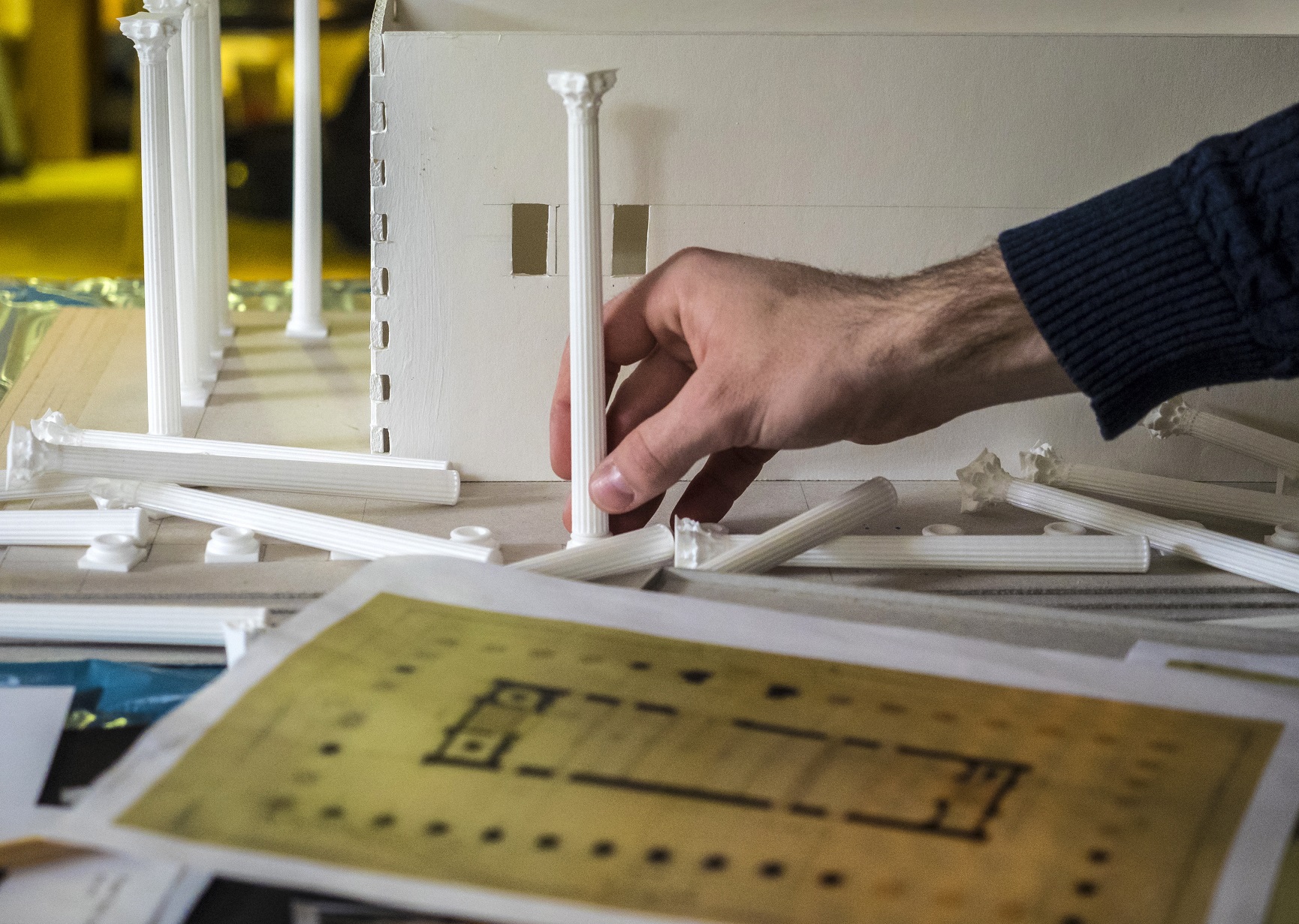ID :
405999
Fri, 05/06/2016 - 10:18
Auther :
Shortlink :
https://oananews.org//node/405999
The shortlink copeid
Restoration of Palmyra’s destroyed monuments to take 5-7 years - Russia’s rep to UNESCO

PALMYRA (Syria), May 5. /TASS/. Restoration of monuments of ancient Palmyra in Syria, destroyed by terrorists of the Islamic State extremist organization, banned in Russia, will take, according to experts, five to seven years, Russia’s Permanent Representative to UNESCO Eleonora Mitrofanova said Thursday.
"Already now all issues of Palmyra restoration are discussed in detail. In particular, Berlin will on June 2-3 host a special conference dedicated to the World Heritage of Syria," Mitrofanova said.
"But everything will depend on which conclusions specialists will come to. Only after a detailed examination will it be possible to understand what to do with these facilities - restore them, reconstruct and so on," she said. "As regards time, specialists say it may take five to seven years."
Mitrofanova said a special organizational structure will be established, within the framework of which there are plans to carry out restoration activity.
Answering the question who will finance the restoration work, Mitrofanova said this will not be UNESCO. "It will certainly be the international community: either a foundation, or each country will finance it on a bilateral basis," she said.
Mitrofanova noted that as of today, a number of countries have already expressed the desire to restore monuments in Palmyra. These are in particular Polish specialists, who have already dealt with restoration of facilities there.
"They came here on an invitation from the Syrian side. As of today, there is also money from the European Union, Bahrain, Austria. Greece, Italy, Russia.. very many countries have expressed their desire. But at first, it’s necessary to understand what to do and only then give money," she said.
The conflict in Syria has lasted since March 2011. In April 2016, the United Nations secretary general’s special envoy on Syria Staffan de Mistura said the hostilities in the country have left 400,000 people dead. Later he specified that it was his personal assessment. Up until now, the UN has named the death count of over 250,000 in Syria.
The ceasefire regime took effect in Syria on February 27, 2016. Shortly before, the UN Security Council adopted a resolution supporting a cessation of hostilities. The document drafted by Russia and the United States was backed by all 15 Security Council member states.
The ceasefire regime does not cover the Islamic State (IS) and Jabhat al-Nusra terrorist organizations as well as other groups ruled terrorist by the Security Council.
Russia takes an active part in the Syrian settlement effort. It helps Syria's authorities fight terrorists and has conducted mine clearing work in the ancient city of Palmyra.
Palmyra, which is on the UNESCO World Heritage list, was recaptured by the Syrian Armed Forces March 27. The city had been controlled by militants of the Islamic State (IS) terrorist group since May 2015. For less than a year of their Palmyra control, IS vandals destroyed the famous Arch of Triumph with the colonnade and other ancient monuments.
Russian General Staff Main Operations Directorate chief Lt. Gen. Sergey Rudskoy said March 31 that the operation to liberate Palmyra was planned with participation of Russian military advisers. Rudskoy said Russia’s Aerospace Forces made over 2,000 strikes to support the Syrian troops. Besides, Russian special operations forces were involved in the effort to recapture the ancient city.
On March 31 morning, Russia’s Defense Ministry reported that the first group of International Anti-mine Center specialists arrived in Syria.
Later in the day, the ministry said the second group of specialists from the interservice team of the Russian Armed Forces’ International Anti-mine Center left the Moscow Region for the Khmeimim airbase in Syria to take part in the humanitarian effort to clear infrastructure facilities and the historical part of the ancient city of Palmyra of mines.
Russia’s Aerospace Forces started delivering pinpoint strikes in Syria at facilities of Islamic State and Jabhat al-Nusra, which are banned in Russia, on September 30, 2015, on a request from Syrian President Bashar Assad.
On March 14, 2016, Russian President Vladimir Putin ordered to start, from March 15, withdrawing the main part of the Russian Aerospace Forces’ group from Syria. Putin said the tasks set before the military "have been fulfilled on the whole." Russian Deputy Defense Minister Nikolai Pankov said strikes on terrorists will continue to be delivered.
Read more





